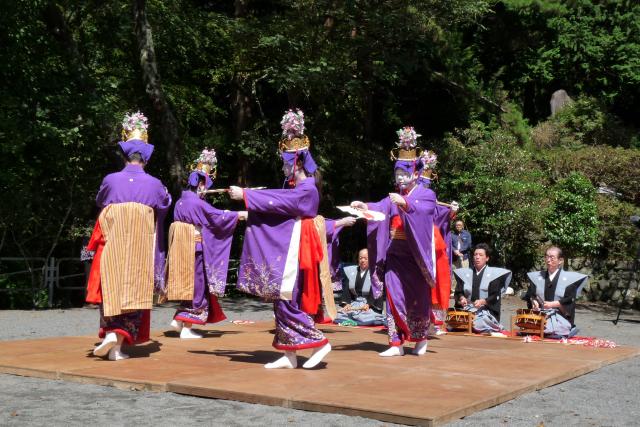History of Okutama

A Historical Town Containing Ruins from the Jomon Period and Traditional Performing Arts Passed Down Through the Ages
The Okutama area contains many ruins dating from the Jomon period (14,000-300 BCE). However, it is said that the first true residents of the area began living here at the end of the ancient era, in the middle of the Nara period (the mid-8th century). During the middle ages, minor noble families scaled the mountains and crossed the valleys into the Okutama area, and brought their entire clans to live here. They coexisted in harmony with the existing residents, and intermingled until the two groups could no longer be distinguished from one another. In 1889, the Municipal Government Act was enforced, and Kori Village, Hikawa Village (which would later become Hikawa Town), and Ogouchi Village were established. In accordance with the Municipality Merger Promotion Law of 1953, the two villages and one town were merged into the present-day Okutama Town. You can learn about some of this history at the Okutama Mizu-to-Midori-no-Fureaikan (Okutama Water and Greenery Museum).
https://www.city.ome.tokyo.jp/site/ome-style/15844.html(外部サイト)
![]()
Kashima Dance
Kashima dance is a type of traditional dance, and one of the folk arts that represents the Okutama Town. In 1980, it was designated a National Important Intangible Folk Cultural Property. In Kashima dance, which is thought to be unique to the Ogouchi area, young men dance while wearing women’s clothing. Each performance involves six dancers dressed as women and four accompanists: two playing the fue (a Japanese-style wooden flute) and two playing the taiko (a Japanese-style drum). The dancers wear formal, long-sleeved kimono with designs on the skirt and ornamental crowns to perform this elegant dance. Other local performing arts of the Oguchi area include shishimai (the lion dance), which is performed in the Hara, Sakamoto, Kawano, and Mine neighborhoods.
http://www.town.okutama.tokyo.jp/kurashi/kyoiku/bunka-sports/kyoudo_geinou/kasima.html(外部サイト)
![]()

Kawano Puppet Show by a Puppeteer on a Movable Chair
Puppet shows by a puppeteer on a movable chair is a traditional performing art of the Kawano area. It developed from traditional puppet shows, and has been passed down as an art form for approximately 150 years. The puppeteers wear black clothes and sit on three-wheeled carts, which they use to move freely around the stage. They dexterously use their fingers and toes to manipulate the puppets in time with a chanted ballad accompanied by a shamisen. From the mid- to late 1800s, puppet show by a puppeteer on a movable chair was performed throughout the region, but today it can only be seen in specific areas. In 1952, these puppet shows were designated a Tokyo Metropolitan Intangible Folk Cultural Property.
http://www.town.okutama.tokyo.jp/kurashi/kyoiku/bunka-sports/bunkazai.html#ogouchi(外部サイト)
![]()

お問い合わせ
このページの担当は自然環境部 緑環境課 自然公園計画担当です。
Related links
Okutama
- Features of Okutama
- History of Okutama
- Wildlife of Okutama
- Sightseeing in Okutama
- Accessing the Okutama Area

